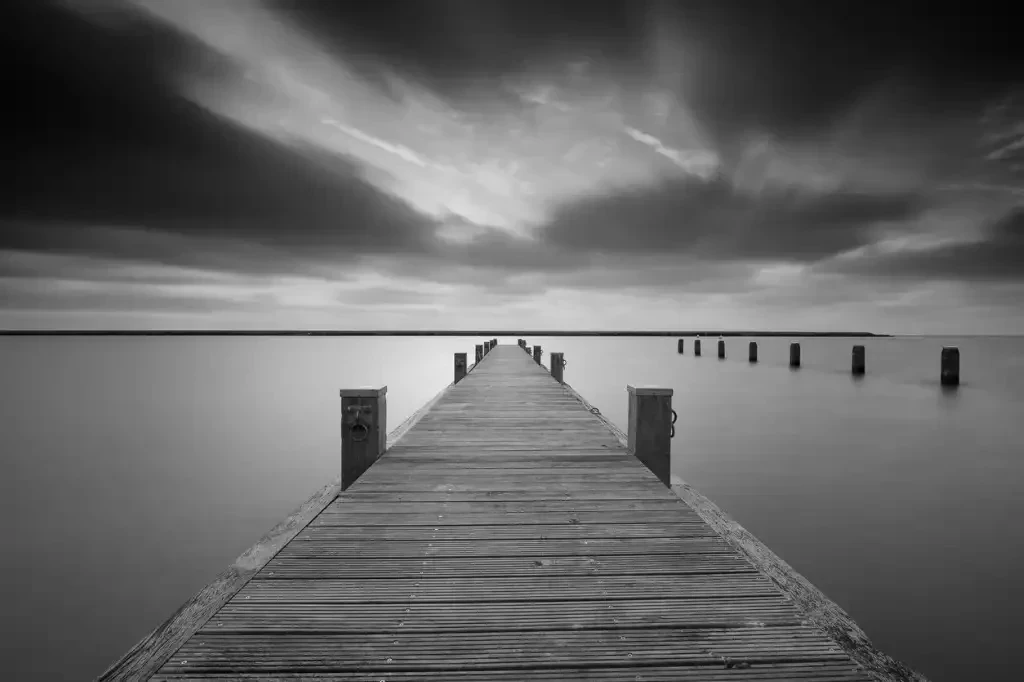Photography, as an art form, spans a vast array of genres and styles, each with its unique charm. Today, we delve into a special corner of this artistic universe – black and white photography. This genre, though seemingly simple, is a rich tapestry woven with shades of grey, contrast, and texture, turning everyday scenes into timeless pieces of art.
Black and white photography holds a cherished spot in the world of visual storytelling. Stripping a photograph of its colors might seem counterintuitive, but this very lack of color often enhances the artistic expression, bringing forth the raw emotions and subtleties otherwise lost in a riot of colors. This genre, steeped in history, has seen resurgence in recent years as photographers seek to explore the depth and character that black and white images imbue.
The History of Black and White Photography
Long before color film became mainstream, black and white was the original language of photography. The early days of photography, starting from daguerreotypes to gelatin silver processes, were dominated by black and white images. As color processes developed and became increasingly popular, black and white photography became a conscious artistic choice rather than a technological limitation.
Why Choose Black and White Photography
Black and white photography possesses an inherent depth that lends itself perfectly to a variety of genres – portraits, landscapes, street photography, and even wildlife. It emphasizes shapes, textures, and form. Without colors to guide the viewer’s eye, the focus shifts to the stark contrast between the light and dark elements of an image.
A black and white portrait can reveal a subject’s character and emotions in an unparalleled manner. In landscapes, this approach can accentuate the raw beauty of the natural world, turning a simple scene into a dramatic vista. Street and wildlife photography come alive as the focus shifts from the vibrancy of the environment to the subjects’ behavior, emotions, and interactions.
Black and White Photography Techniques
Understanding how colors translate into black and white is critical. Certain shades that look distinct in color may appear very similar in black and white, leading to a flat and uninteresting image. Hence, visualizing the scene in black and white before shooting is a crucial skill to develop.
Use of light and shadow plays a pivotal role in black and white photography. Harsh, contrasty lighting situations that might seem unappealing for color photography can create striking black and white images.
Post-processing also plays a crucial role. Digital editing tools offer control over the tonal range of an image, allowing you to adjust the brightness and contrast of different colors as they appear in black and white. This helps in achieving the desired balance between the different elements of your composition.
Revival of Black and White Photography
With the advent of digital photography and advanced post-processing tools, black and white photography has seen a resurgence. This renewed interest is not merely nostalgia but a reiteration of the artistic potential this genre holds. Even the major social media platforms have embraced the black and white aesthetic, offering filters that mimic this classic style.
In conclusion, black and white photography continues to hold a revered spot in the world of photography. Stripping the color away reveals a different perspective of the world, one that offers a timeless beauty that captivates and intrigues. Embrace the grayscale and allow yourself to explore the fascinating world of black and white photography.


0 Comment